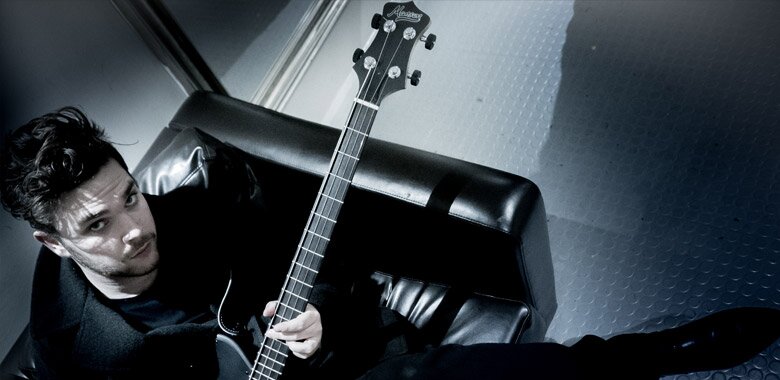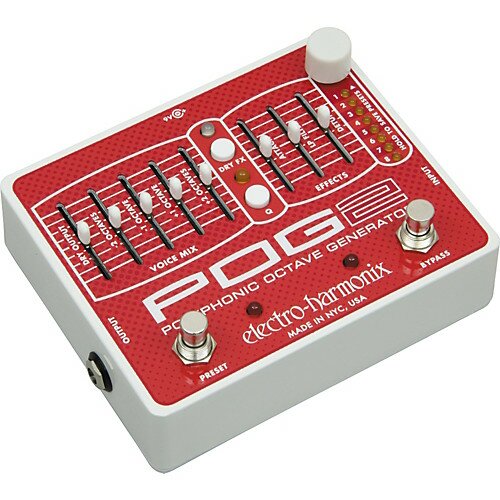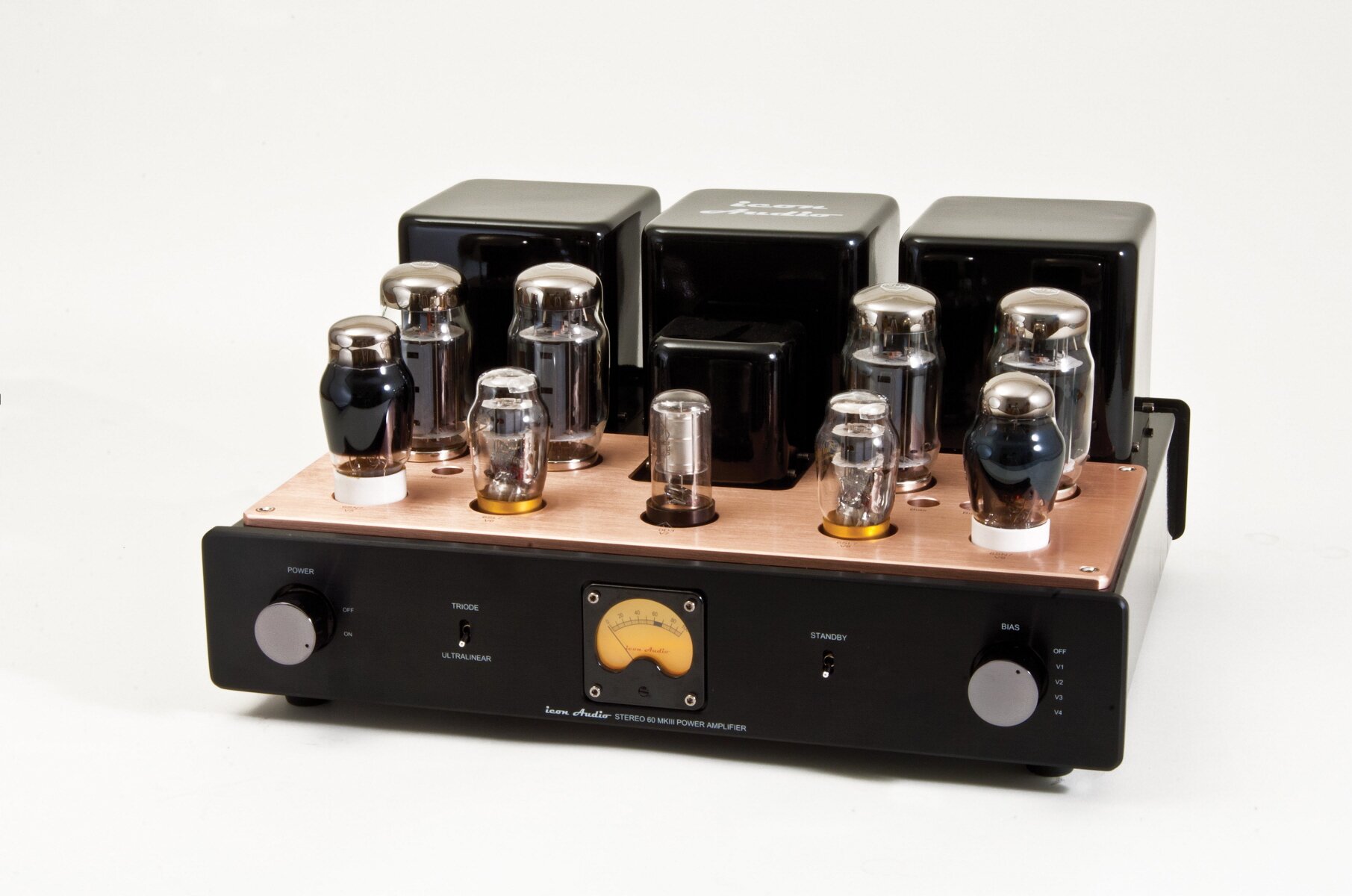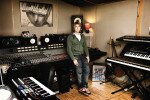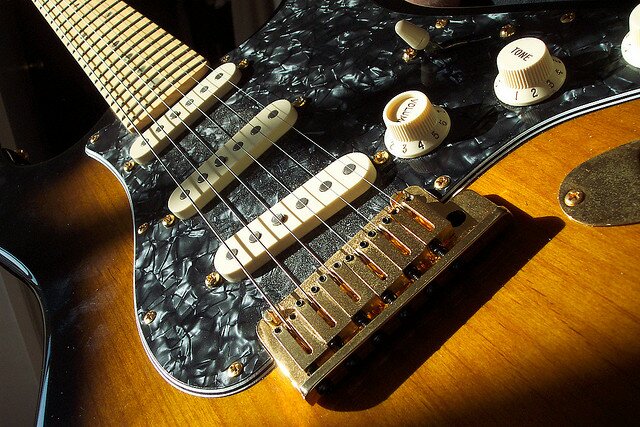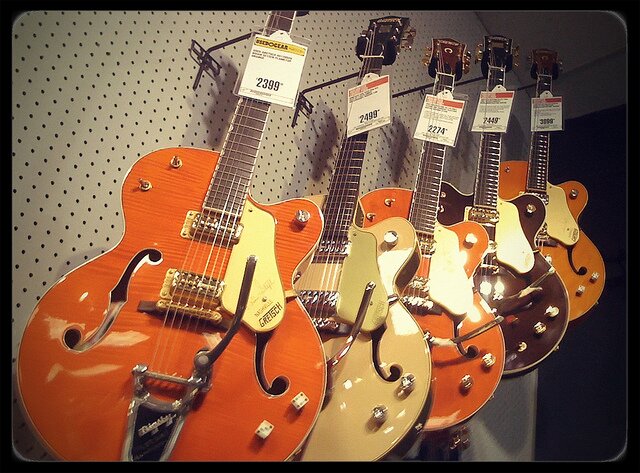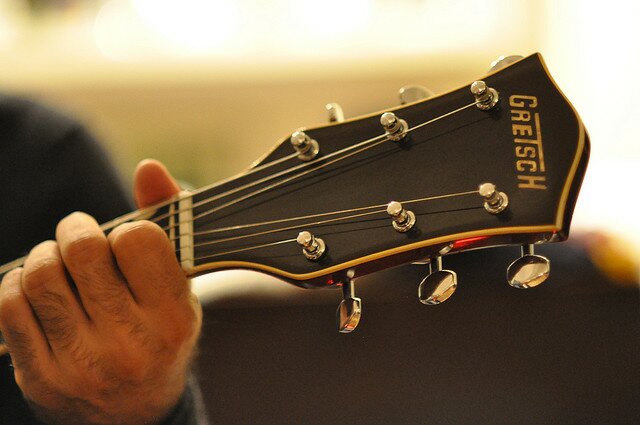How Does Mike Kerr from Royal Blood Sound So Good?

If you’ve seen Royal Blood live, listened to their fantastic debut record, or just watched some of their performances on YouTube, you’ll be familiar with their enormous sound. Put simply, it’s epic.
I have to admit, the first time I heard them play I thought there had to be some backing tracks going on behind the scenes. The notion of a two-piece sounding huge didn’t seem plausible, but it really is. Royal Blood sound massive. Not just ‘two-piece big’, but they have a sound to rival any other band.
With Ben Thatcher on drums (also sounding MASSIVE), Mike Kerr takes up bass and vocals, and with a truly smart rig achieves an incredible sound that fills in the gap that most guitarists leave bare.
Understandably so, Mike has always been relatively secretive about his rig. After-all it’s one of the things that makes this band so special. That in our opinion just makes it even more intriguing, and one we couldn’t resist looking into.
Guitars
The thing that makes Mike’s sound so interesting is the combination of bass and guitar tones he manages to get from one instrument. Obviously there’s some smart work going into the rig to make it all happen, but clearly the choice of guitar is key.
Notably, the use of short scale basses certainly helps out with the tone, but with such a requirement for drive the pickups have also got to be considered, as has the general feel of the instrument for such an energetic performance.
Taking a look at a heap of videos, interviews and photos online, we can see that the mainstays of Mike’s collection are as follows.
- Fender Starcaster Bass – a stunning bass guitar complete with F holes. Mike’s choice has a lovely black finish, but he’s also been seen playing a beautiful pearl white version too. If you want to buy one new, the going price is £815.
- Gretsch Electromatic G2220 Junior Jet II Bass – A mainstay of the Royal Blood lineup since the very early days, the Gretsch is clearly a work horse that just keeps going and going. What’s really surprising is the price as a new one will only set you back £312.
- Manson Mike Kerr Custom Bass Guitar – Given the unique nature of Mike’s sound, it was only really a matter of time until he got a signature guitar made up. It’s not clear exactly what custom items the Manson Mike Kerr features, but it certainly looks the part.
- Fender Deluxe Jaguar Bass – A classic base, and one of our favourite looking instruments. It’s not used as frequently as the Gretsch and Starcaster, but hopefully it’ll get out more on the next record and touring cycle.
Amps
This is where things start to get pretty clever. From what we can tell, there’s a massive part of Mike’s sound coming from splitting the signal via a series of guitar and bass amps, and then combining the sound to get that amazing rawcus guitar tone whilst maintaining the lower end.
If you listen to any live performance, you’ll notice a really clear definition between the ‘guitar’ tones and the bass notes. In our opinion this is the real clever part, and probably also the part of the sound that makes people assume there’s a backing track playing the bass.
Taking a look at Royal Blood’s set at Reading in 2015, and doing a bit more research online it seems that the mainstays of Mike’s amp set up are as follows:
- Fender Super Bassman Pro 300W Tube Bass Amp Head
- Fender Bassman 810 Pro (8×10 Cab)
- Fender Supersonic 22 Combo
- Tech 21 Sansamp PSA1.1
- Tech 21 Sansamp RBI Rackmount Bass Tube Amp Emulator
In the following short interview with Fender, Mike goes into a little more detail on his amp set up and selection:
What’s really interesting here is that the Bassman heads were really chosen for the drive channel, having struggled to get a great overdriven bass sound from just pedals alone.
The supersonic combos are then added in to provide the guitar sounds, which when mixed in with the bass amps sound absolutely massive.
Given the nature of the whole rig here (splitting bass vs. guitar), it’s always going to be key to have the right mix of bass amps and guitar amps. Sadly this makes it a little harder to emulate the sound on a tight budget, as we think you’ll struggle to truly get it right with only one amp.
Effects
Following on from the foundations of the rig (guitars and amps), there’s a lot of clever things happening on the pedal side of things. It’s also the hardest part of the rig to work out, as beside trying to analyse videos and photos, there’s not a huge amount of information online about what pedals Mike uses, and more importantly how he uses them.
On first glance, Mike’s pedal board actually appears to be pretty straightforward. It’s certainly not huge. However, the really interesting thing for us is how the pedals are used to split the signal, and trying to work out what sits on the guitar side of the chain, vs. what sits on the bass side.
From reviewing videos and looking at a bit of research online, the main pedals Mike appears to be using are:
- Guitar side / Bass side?
- Boss LS-2 Line Selector
- Palmer Triage Amplifier Selector
- 2 x Electro-Harmonix POG2 (signal split)
- Boss PS-6 Harmonist Pitch Shifter
- ZVex Vextron Series Mastotron Fuzz Guitar Effects Pedal
- Electro-Harmonix Germanium 4 Big Muff Pi
- Strymon Flint Tremolo & Reverb Pedal
From what we can tell, the Electro-Harmonix POG’s play a pretty central role. If you’ve never played around with the POG2, it’s an excellent pedal that allows you to add an octave, or shift the tone up and down by an octave. Given that there’s two of these on Mike’s board, it would make sense that he’s using one to shape both the guitar and bass tones.
In terms of splitting the signal out, the Boss LS-2 Line Selector provides so many options for splitting and combining signals. At the end of the chain we suspect the Palmer Triage Amplifier Selector does the job of sending the signal out to the different amps.
For those who have tried combining amps, you’ll understand the need to remove the earth hum created by having two amps in the chain. The Palmer unit achieves this with a ground lift switch for each output.
In terms of overdrive on the floor, there’s the classic Big Muff and also the Mastotron Fuzz unit. So pretty simple there.
Effects wise there’s also not a huge amount going on, with the tremolo & reverb unit, and then the Boss P-6 Pitch Shifter which you can hear on solos in songs such as Figure Out (see from 2.40 mins):
I’m pretty sure anyone with even a passing interest can agree that Royal Blood’s live sound is pure brilliance, and one which totally sets them apart. Add together a bunch of refreshingly rock and roll tunes and it’s no surprise they rose to where they are so quickly.
